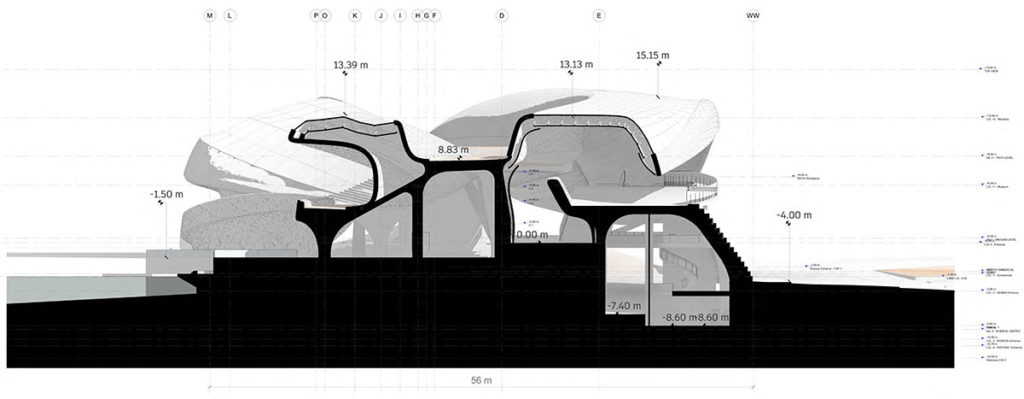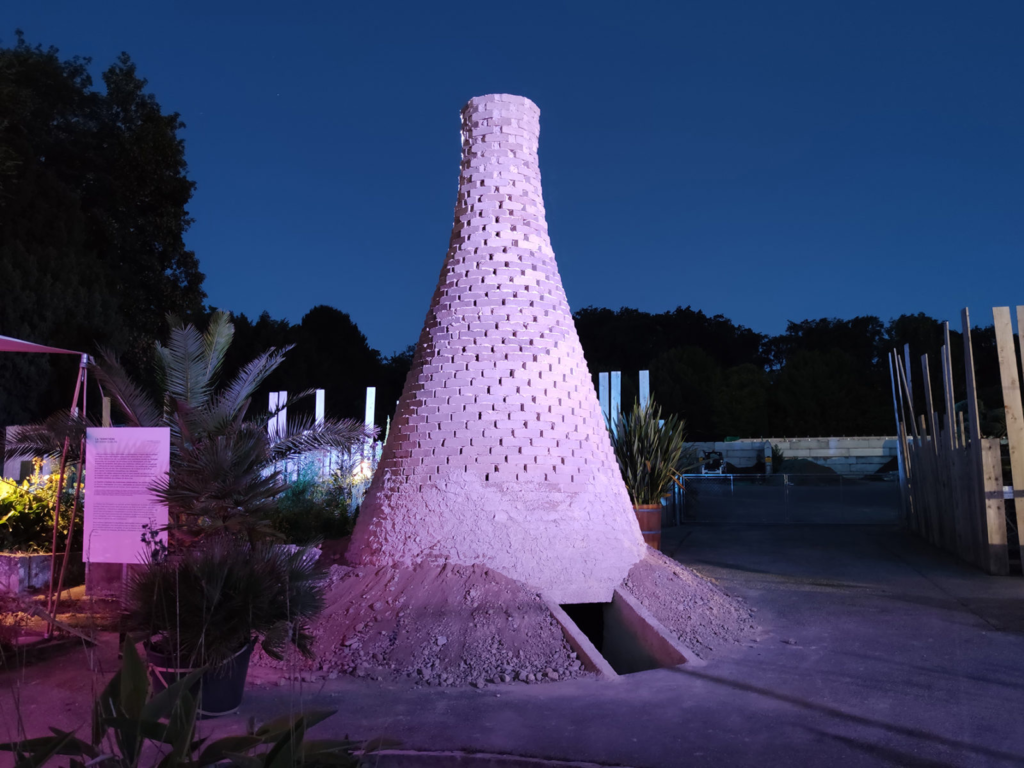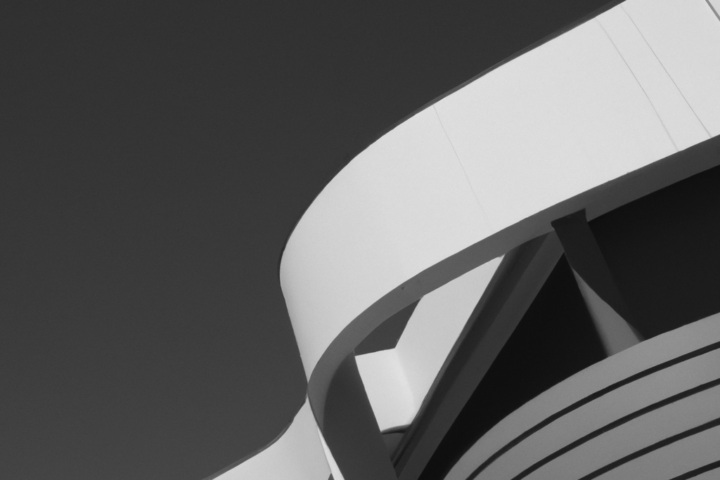
Quantum Architecture: Are there any Boundaries of Design and Reality?
Introduction to Quantum Architecture
Quantum architecture is a burgeoning field that marries the principles of quantum mechanics with architectural design, offering a visionary glimpse into the future of built environments. It delves into the realm where uncertainty, complexity, and infinite possibilities converge, reshaping our understanding of architectural form, function, and experience. By integrating quantum concepts into architectural practice, designers aspire to create spaces that transcend the limitations of traditional design paradigms, embracing dynamism, adaptability, and responsiveness to the ever-evolving needs of society and the environment.
Superposition in Architecture
Superposition, a cornerstone of quantum theory, posits that particles can exist in multiple states simultaneously until observed. In architecture, this principle inspires the creation of buildings that exhibit fluidity and flexibility, capable of seamlessly transitioning between different configurations in response to changing conditions. Imagine a structure that morphs from open to enclosed spaces based on user preferences or environmental factors. Superposition-driven design allows architects to imbue buildings with a sense of vitality and harmony, blurring the boundaries between indoor and outdoor environments and enhancing occupant well-being.
Like Schrodinger’s cat, unknown what condition it is in, we can look at innovation and design in a superposition manner. Architectural designs can incorporate features that respond to environmental conditions, such as changes in temperature, humidity, or occupancy. Buildings can be designed with movable or transformable elements that allow spaces to change their configuration based on different needs or functions. For example, a building facade that doubles as a solar panel array or a roof garden that also functions as a rainwater harvesting system.
Superposition in architecture embraces the idea of fluidity, versatility, and multiplicity in design, allowing buildings to transcend static constraints and adapt to the dynamic needs of users, the environment, and the surrounding context. It represents a shift towards more responsive, inclusive, and sustainable architectural practices that blur the boundaries between form and function.
Entanglement in Architecture
Entanglement, the phenomenon where particles become intrinsically connected regardless of distance, offers a paradigm-shifting perspective on architectural design. In the context of architecture, entanglement manifests as interconnectedness and interdependence among building elements, fostering resilience, coherence, and synergy. Buildings designed with entanglement in mind are akin to complex ecosystems where every component influences and is influenced by others, creating a harmonious whole greater than the sum of its parts. This holistic approach to design not only enhances structural integrity and performance but also promotes sustainability, resource efficiency, and social connectivity.

For example, in a sustainable building design, the orientation of windows, the placement of shading devices, and the selection of materials may all be entangled factors that work together to optimize daylighting, reduce energy consumption, and enhance occupant comfort. Similarly, in a smart building system, sensors, actuators, and control algorithms may be entangled to create a responsive and adaptive environment that adjusts intelligently to changing conditions.
Entanglement in architecture challenges the traditional notion of buildings as static and independent entities by promoting a holistic approach to design that considers the interconnectedness of all building elements. By embracing entanglement, architects can create buildings that not only perform more efficiently but also foster resilience, adaptability, and harmony with their surroundings.
Quantum Materials and Technologies
The advent of quantum materials and technologies heralds a new era of possibilities in architectural innovation. Quantum computing, with its unparalleled computational power and processing capabilities, revolutionizes design optimization, simulation, and generative design processes. Architects can harness quantum computing to explore vast design spaces, identify optimal solutions, and push the boundaries of creativity and complexity. Quantum sensors, equipped with sensitivity and precision beyond conventional sensors, enable real-time monitoring and analysis of building performance, facilitating adaptive, responsive environments that prioritize user comfort, energy efficiency, and environmental sustainability.
Quantum materials are substances that exhibit unique quantum mechanical properties, such as superconductivity, quantum confinement, and quantum coherence. Superconducting wires could enable highly efficient electrical distribution systems while superconducting magnets could be used for magnetic levitation (maglev) transportation systems within buildings. In architecture, quantum dots could be used in advanced lighting systems, solar cells, and smart windows to improve energy efficiency and indoor comfort. Quantum well structures could be incorporated into photovoltaic cells and sensors to enhance their performance and sensitivity. Harnessing quantum coherence could lead to the development of advanced materials with unprecedented strength, durability, and functionality.
Quantum technologies encompass a diverse array of tools and techniques that leverage quantum principles to manipulate and control physical systems at the atomic and subatomic levels. In architecture, quantum technologies offer exciting possibilities for design, simulation, fabrication, and analysis. In architecture, quantum computing could be used for complex simulations, optimization algorithms, and generative design processes, enabling architects to explore vast design spaces and find optimal solutions.
Biomimicry and Quantum Biology
Biomimicry, the practice of emulating nature’s strategies and forms, intersects with quantum biology to inspire innovative design approaches in architecture. Quantum biology explores how quantum phenomena, such as coherence and tunneling, play a role in biological processes. Architects draw inspiration from nature’s elegant solutions to complex challenges, integrating principles from quantum biology into their designs. Imagine buildings that harness quantum coherence to optimize energy transfer or utilize quantum tunneling for efficient material transport. By mimicking nature’s ingenious solutions, architects aspire to create buildings that not only harmonize with their surroundings but also enhance ecosystem resilience and promote sustainability.

For example, architects may look to the structure of termite mounds for inspiration in designing ventilation systems that optimize airflow and regulate temperature within buildings. Similarly, the way certain plants harness sunlight for photosynthesis can inspire the design of facades and shading systems that maximize natural light while minimizing heat gain.
Biomimicry and quantum biology offer exciting opportunities for innovation in architecture, from the design of more sustainable and resilient buildings to the development of advanced materials and technologies. By embracing these interdisciplinary approaches, architects can create spaces that not only reflect the beauty and efficiency of nature but also push the boundaries of design and construction.
Complexity and Emergence in Architecture
Complexity theory and emergence offer valuable insights into the dynamics of architectural systems and urban environments. Complexity arises from the interactions among diverse elements, giving rise to emergent behaviors and patterns. Architects leverage complexity and emergence to design self-organizing, adaptive architectural systems that respond intelligently to changing conditions. Imagine a cityscape where buildings, infrastructure, and ecosystems coalesce into a vibrant, interconnected network, constantly evolving and adapting in response to social, environmental, and economic forces. By embracing complexity and emergence, architects seek to create cities that are resilient, inclusive, and conducive to human flourishing.
Emergence is a fundamental concept in complexity theory that describes the spontaneous appearance of new properties, behaviors, or patterns at a higher level of organization. In the context of architecture, emergence manifests as the unexpected or unforeseen outcomes that arise from the interactions among various architectural elements. For example, the emergence of vibrant street life in a neighborhood may result from the interaction of diverse land uses, pedestrian-friendly design features, and cultural activities, creating a dynamic and lively urban environment that is greater than the sum of its individual components. Emergent properties in architecture can be observed at multiple scales, from the self-organization of building occupants within interior spaces to the emergence of distinct urban patterns and forms at the city scale.
Complexity and emergence in architecture highlight the interconnectedness and dynamic nature of architectural systems and urban environments. By studying the interactions among diverse elements and embracing the emergent properties that arise from these interactions, architects can design buildings and cities that are responsive, adaptive, and resilient, fostering vibrant and sustainable communities for inhabitants.
Challenges and Considerations
Quantum computing is still in its nascent stages, and significant technical hurdles remain to be overcome. Challenges such as qubit stability, error correction, and scalability pose formidable barriers to the widespread adoption of quantum-inspired design approaches. Architects and researchers must collaborate with experts in quantum computing to develop robust solutions that address these technical challenges and ensure the reliability and efficiency of quantum architecture.
Despite the promise of quantum architecture, significant challenges and considerations must be addressed to realize its full potential. Technical hurdles, such as scalability, cost, and reliability, pose formidable barriers to the widespread adoption of quantum-inspired design approaches. Ethical and philosophical questions also abound, including concerns about privacy, security, and the impact of technology on human well-being. Moreover, interdisciplinary collaboration and research are essential to navigate the complex interplay between quantum theory, architectural practice, and societal values. By confronting these challenges head-on and fostering open dialogue and collaboration, architects can pave the way for a more inclusive, equitable, and sustainable future built on the principles of quantum architecture.
Future Directions and Possibilities
Looking ahead, the future of quantum architecture brims with promise and potential, offering a tantalizing glimpse into a world where creativity and technology converge to reshape the built environment in unprecedented ways.
One exciting direction for quantum architecture lies in the realm of sustainable design and construction. Quantum-inspired materials and technologies have the potential to revolutionize the way buildings are designed, constructed, and operated, leading to a more sustainable and environmentally friendly built environment. Imagine buildings that generate their own energy, purify the air, and adapt to changing environmental conditions with ease, thanks to the integration of quantum principles into their design and construction.
Another exciting prospect is the democratization of design and construction through the use of quantum-inspired technologies. With advancements in digital fabrication and additive manufacturing, coupled with the computational power of quantum computing, architects can create customized, affordable, and sustainable housing solutions for communities around the world. By leveraging quantum principles to optimize design processes and reduce construction costs, architects can empower individuals and communities to take control of their built environment and shape the future of their cities and neighborhoods.
As we journey into the future of quantum architecture, let us embrace the limitless possibilities of creativity and technology to create a world that inspires, elevates, and empowers. Together, we can push the boundaries of architectural innovation and redefine the way we live, work, and play in the built environment of tomorrow.




One Comment
Abhinav Solanki
Really insightful stuff!